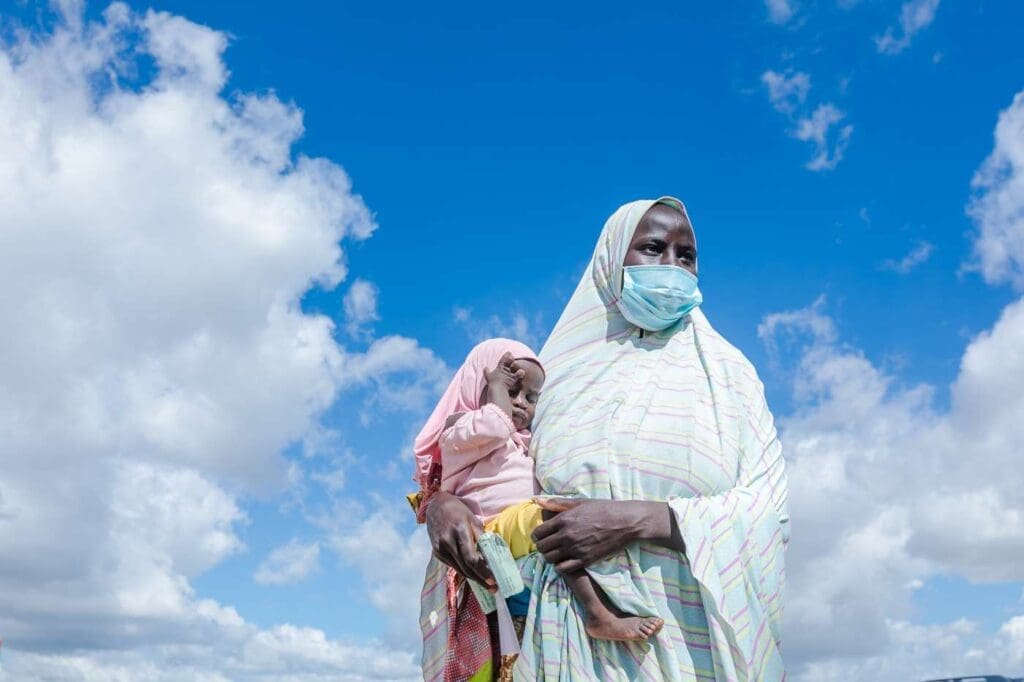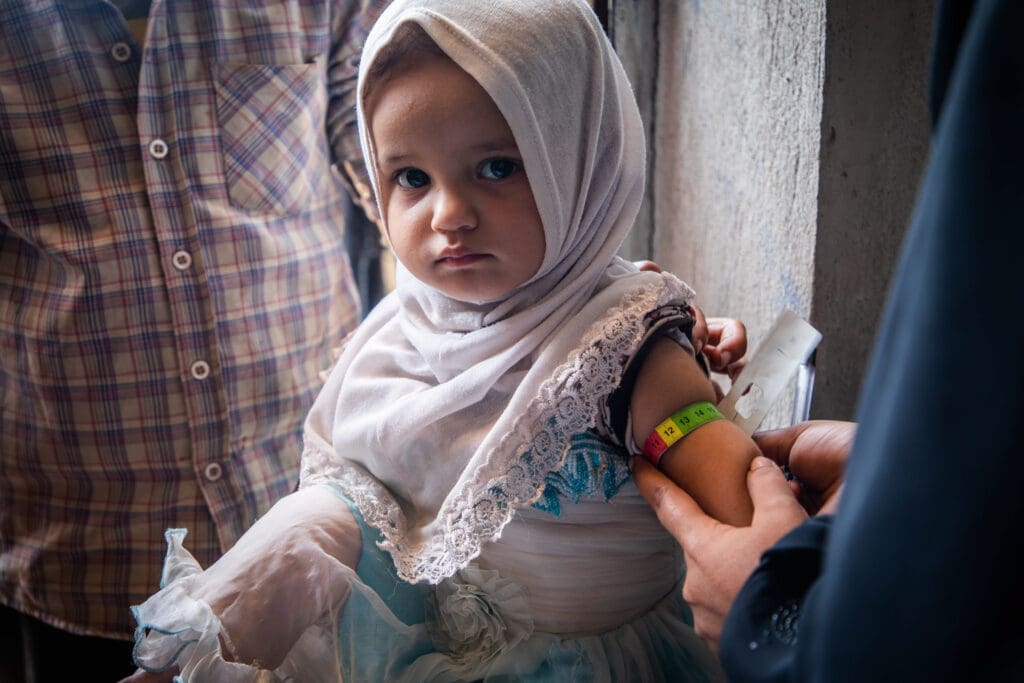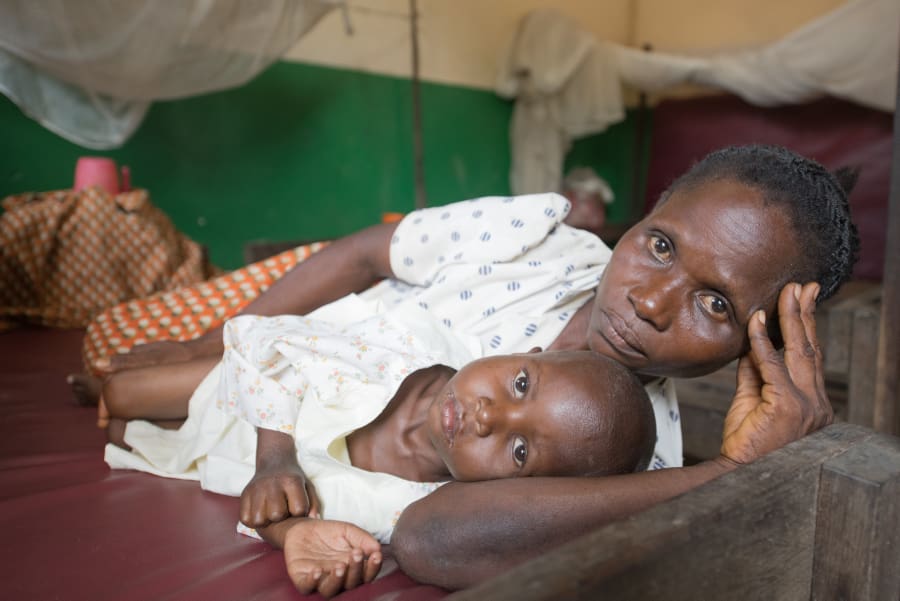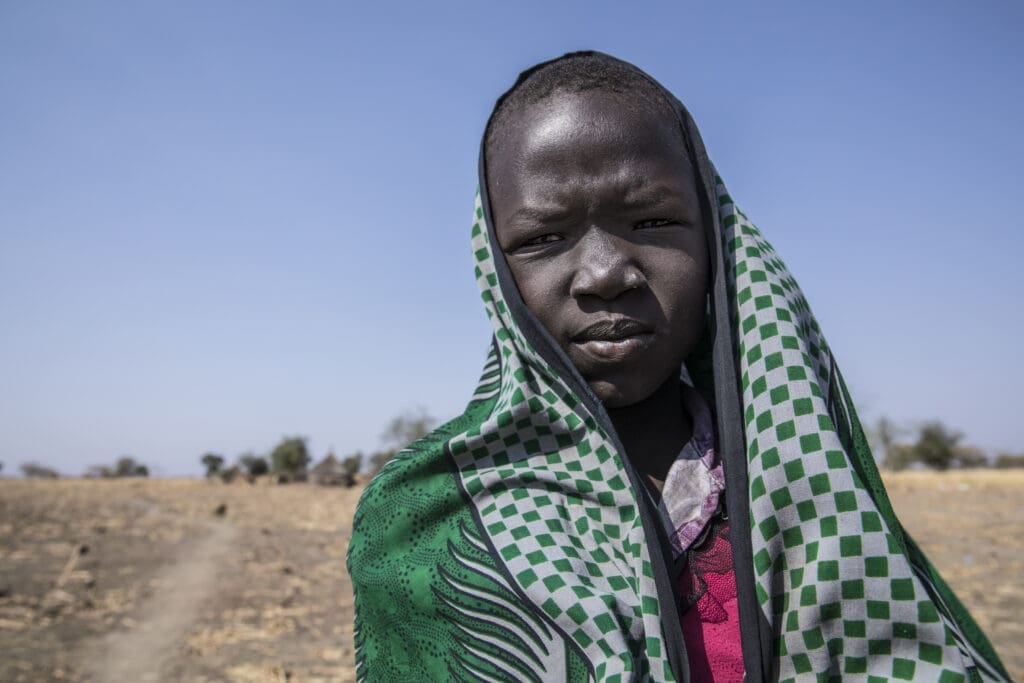
Children at War: Six Stories From the Most Dangerous Places on Earth
War turns lives completely upside down. It uproots families, destroys infrastructure and disrupts food production. These forces make food hard to find, difficult to afford and can lead to even more unrest and violence.
Conflict is by far the number one cause of hunger, and it’s especially cruel to children. Kids living in countries ravaged by violence are more than twice as likely to be malnourished, which undermines their health, their education and their futures.
Stomach-aching hunger is a daily reality for millions of children around the world – a scale that’s difficult for most of us to imagine. From Yemen and Syria to Nigeria and South Sudan, the stories of these six children remind us that conflict is entirely man-made, and it is entirely within our power to stop it.
Amani: Yemen

An aid worker measures Amani’s arm using Mid-Upper Arm Circumference (MUAC) tape to check if she is malnourished.
Two-year-old Amani gets checked for malnourishment by an aid worker in Yemen. The little one was carried to a United Nations World Food Programme (WFP) feeding center by her older brother. Together they’re surviving the world’s biggest hunger crisis: over half of of Yemen’s population is facing severe hunger.
Fighting has caused the price of food to skyrocket, so bread is one of the only things left to eat that families can afford. Today, there are 3.3 million women and children like Amani requiring treatment for acute malnutrition from such a limited diet. The U.N. World Food Programme is doing everything it can to keep starvation at bay and deliver the food they need to survive.
Khitam: Syria

Khitam is fortunate to still be in school. More than 1 million Syrian children are not.
10-year-old Khitam is as old as the Syrian crisis. She hasn’t known anything but war, ugliness and deprivation, yet she dreams of beauty and becoming an art teacher. For now, she makes do with U.N. World Food Programme school meals and an occasional art class. At the same time, fallout from COVID-19 is pushing tens of thousands of Syrians deeper into hunger. With food prices reaching record highs and an economy on the verge of collapse, kids have borne the brunt of the war’s effects.
Amadu: Nigeria

Families like Fatima’s have witnessed the killing of hundreds of civilians, the abduction of women and girls, the destruction of homes and the large-scale forced displacement of entire towns.
Fatima fled her hometown in Nigeria when her community was attacked by armed men. She was pregnant, and for months the U.N. World Food Programme was her only source of food. Tragically, her baby died at just two-months old. Fatima has since reunited with relatives and uses the food she receives from the U.N. World Food Programme to nourish her new baby, Amadu. She hopes his fate will be different.
Since fighting first erupted in 2009, Northeastern Nigeria has become an epicenter of climate change, poverty and conflict. More than a million kids under the age of five – like Amadu – are acutely malnourished.
Tshela: The Democratic Republic of the Congo (DRC)

Decades of conflict have devastated the DRC, leaving millions dead or displaced. 3.4 million children are severely malnourished.
Little Tshela rests her head in the nook of her mother Veronique’s arm after a ten-day treatment for severe malnutrition. Veronique, Tshela and her five siblings fled conflict in their village. Now, Véronique holds down two jobs, earning about $2 on her best days. Her kids eat in the morning and only sometimes in the evening – when she’s made enough money. Despite her mother’s best efforts, Tshela became severely malnourished. It’s a common story in this country.
The DRC is the world’s largest hunger crisis. Decades of civil war mean that 3.4 million Congolese children don’t get enough to eat.
Nyageka: South Sudan

Nyageka is walking to the local market by herself. Girls must often make long trips by themselves, which greatly increases their risk of being assaulted or abducted.
Nyageka Khoak wants to be a social worker when she grows up. “I want to help my community,” she says. But beautiful kids like Nyageka must overcome huge obstacles to reach their dreams – hunger often robs them of their futures before they begin. In South Sudan, where Nyageka lives, a deadly combination of conflict and erratic weather have led to record-high levels of food insecurity, making it nearly impossible for families to focus on anything other than scraping together their next meal.
The U.N. World Food Programme helped prevent a sweeping famine in 2019, but nearly 3 million people are still on the brink of starvation today.
Yagana: The Sahel

In Niger – where this mother and daughter live – people’s diets are so limited that they lack necessary vitamins and minerals. As a result, 10 percent of children under the age of 4 are severely hungry.
Made up of Burkina Faso, Mali and Niger, the Central Sahel region faces an ongoing, lethal combination of conflict and climate change.
This mother, Yagana Bukar, and her daughter are waiting in line to receive their food ration at a U.N. World Food Programme distribution point. Decade-long conflict has left millions of them, and their children, with nowhere else to turn.
~
When conflict erupts, food is one of the first things people lose access to – and the smallest, youngest humans are among the most vulnerable. With your help, the U.N. World Food Programme provides lifesaving meals and specialized foods full of vitamins and nutrients, helping kids fend of malnutrition.
Your donations provide not only emergency assistance, but also longer-term projects to build back people’s self-reliance in the face of upheaval. That means land rehabilitation, agriculture training, rebuilding infrastructure and bolstering local food markets in the world’s most volatile places.
The U.N. World Food Programme reaches conflict zones others can’t. But we can’t do it without your support. Help us nourish the futures of kids like these. Send a meal today.




